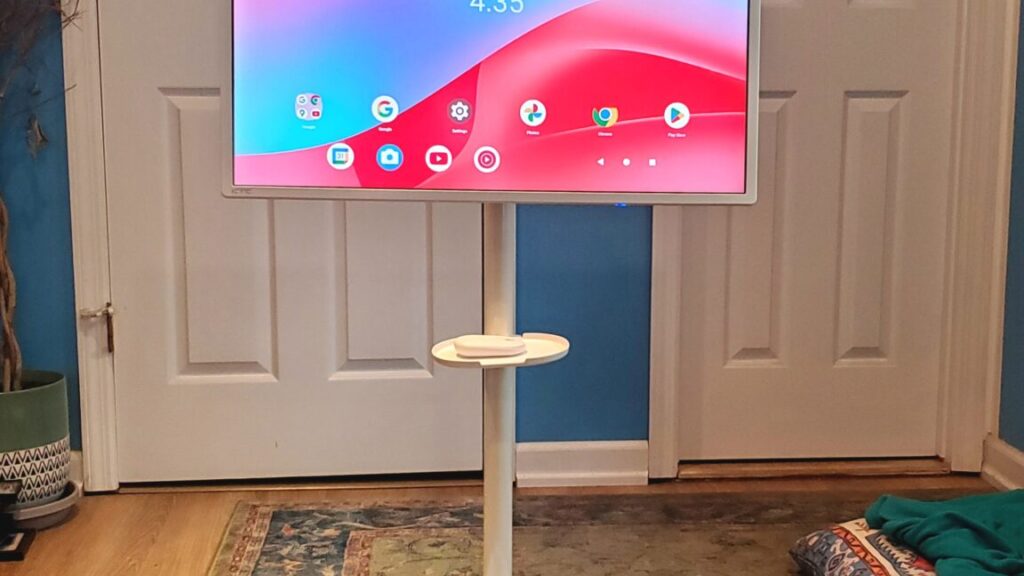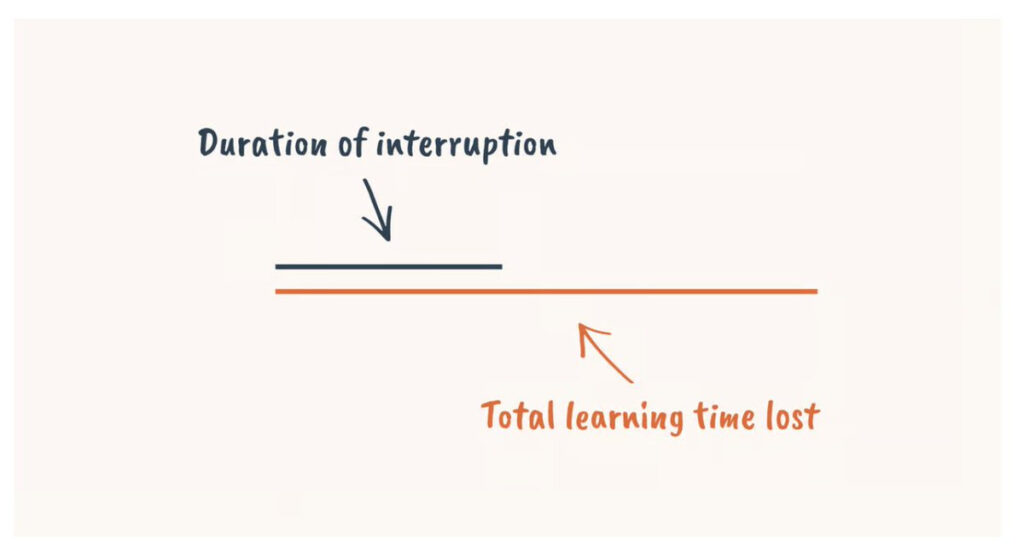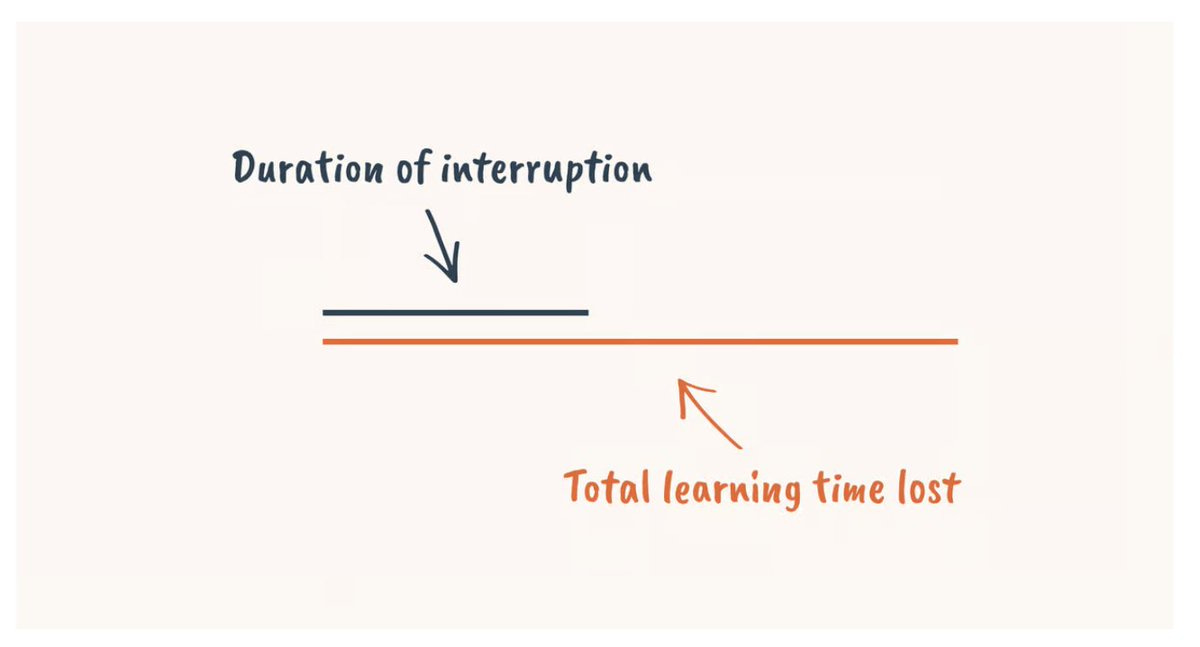The epic 18k word writeup on Austin’s flagship Alpha School is excellent. It is long, but given the blog you’re reading now, if you have interest in such topics I’d strongly consider reading the whole thing.
One must always take such claims and reports with copious salt. But in terms of the core claims about what is happening and why it is happening, I find this mostly credible. I don’t know how far it can scale but I suspect quite far. None of this involves anything surprising, and none of it even involves much use of generative AI.
Rui Ma here gives a shorter summary and offers takeaways compatible with mine.
-
What Is It?
-
What It Isn’t.
-
Intrinsic Versus Extrinsic Motivation.
-
High Versus Low Structure Learners.
-
I’ve Got a Theory.
-
Is This Really The True Objection?
This is essentially goal factoring that combines several known effective techniques.
In particular:
-
Spaced repetition and mastery, require full learning without letting things drop.
-
Immediate problem sets with immediate feedback and explanation.
-
Tracking clicks and eye focus and providing feedback on that too.
-
Gamified reward systems for atomic learning actions, paid prizes.
-
1-on-1 attention upon request, 5-to-1 overall student-teacher ratio.
-
Short bursts with breaks.
-
Flexibility on what kids do when within academics and freedom to push ahead.
-
Not wasting time on things you don’t care about, getting rid of bad methods.
-
Within that framework, find reasonable educational software, use it.
-
Afternoon projects and tasks always involve concrete and measurable output. ‘Check charts’ give bigger missions to do that gate ability to advance grade levels, to get kids used to longer harder things and developing agency.
You get all the academics in during the morning, and advance much faster than normal. Then you have the afternoon left to do whatever you want, including filling in any ‘soft’ skills you decide were important. You don’t try to do it all in some sort of all-purpose Swiss-army-knife lecture classroom and pretend it’s not pre-Guttenberg.
Most time is spent learning on a computer, watching videos and doing problems, but if you ever need help you can ask for a teacher, and if you ever struggle they bring one in for you. There’s still a lot of human attention going into all of this.
Does it work for academics? This ia a very skin-in-the-game way to assert that it does, and reports all say that it does, regardless of exactly how well:
The school’s “100% Money Back guarantee” is that every student who attends will be in the top 1% academically and win at least one national academic competition (for kids who start in kindergarten they guarantee 1350+ SAT and 5s on APs by 8th grade).
You can and should worry that they are effectively teaching to various tests or focusing narrowly on subsets of academics, but regular school does that a lot too, the entire afternoon is free for other things, and also there is a fixed amount that you can present good results via test optimization. You can’t get years worth of extra results. MAP Growth Speed findings work the same way, at some point it can’t be faked.
Spaced repetition works wonders as does ensuring mastery, and being able to customize for what each individual child actually needs right now. A giant portion of time spent in school is obviously wasted by failure to reinforce or by teaching things that aren’t relevant or by simple boredom and so on. Immediate feedback is huge.
Selection effects also are important here, on various levels, but I think these results are bigger than that can account for, by a lot.
Is all of this optimal? Not even close, but it doesn’t have to be. The baseline it is up against is downright pathetic.
This include most expensive private schools, like the horror story example that is the first section of this review. They work hard for the right to pay tens of thousands a year to get a peer group of others that did the same, and in exchange get a school entirely uninterested in teaching their student anything that can be verified or that the patents value. When they challenge the school, the school threatens to kick them out in return.
That’s the standard you’re up against.
So there is no reason that the core of this wouldn’t work, or wouldn’t scale, once a given student gets to the point they can participate. Performance would fall off somewhat as you lose other advantages, like selection and buy-in and the ability to bid higher for a mostly better distribution of teachers, but all of that seems easily survivable.
The only part whose effectiveness seems non-obvious and the system might fail to scale is the incentive program, the gamified rewards, and the possibility that this would fail as motivation for a lot of or even most students. I’ll tackle that in a bit.
It would work and scale even better if you incorporate generative AI. Certainly most of the time that one is ‘stuck’ in these situations, generative AI can help you a lot in becoming unstuck, or letting kids follow their curiosity in various ways. You can (if we can’t find a better answer) disable or monitor AI use during assessments.
This isn’t a way to save money or hire fewer teachers, but I notice this is weird at least for the morning portion? Shouldn’t it be that, if they want that?
If a pattern of stumbles appears the system will automatically task the student to book a “coaching call” with a remote teacher (most of these teachers seem to be based in Brazil). Kids can also choose to self-book calls with the “coaches” at any time.
…
Today she booked it at 11: 10 and had the call at 11: 15, but she said once it took her two days to get the meeting. I asked her how often she has a call and she said less than once a day, but more than once a week.
Thus, the remote teachers can’t possibly be that large a part of the 5:1 ratio, and presumably are not expensive. This also points to a potential improvement, since an in-person tutoring session would be more effective when possible. The physically present teacher should be able to handle a lot of kids at once during academic time if they are all on their computers.
Thus the 5:1 ratio must be coming from the afternoon activities, which is cool but presumably optional. The system works without it. The actual marginal costs here for an additional student that matter should be quite low.
It also isn’t aristocratic tutoring. I am very confident that aristocratic tutoring, as in constant 1-on-1 attention from a variety of experts, is the most effective strategy available if you have the resources to do it and you combine it with other best practices like spaced repetition. This is an attempt to get a lot of the benefits of that without the associated extremely high costs. I would also expect incorporating generative AI to help move us further in this direction.
What are you giving up from the ‘traditional’ school experience?
From what I can tell you are mostly giving up ‘classes,’ meaning lectures where a group of kids sit in desks and listen to someone talk with some amount of interaction. Which, again, seems like an obvious terrible way to accomplish essentially anything? If you think that the interactions within that setting are somehow socially important or incidentally teach other skills other than how to sit still, obey and be bored for extended periods, in a way that can’t be made up for several times over with a free afternoon for other things, I notice I am confused why you would think this.
If you do think the main goal of school is to learn to sit still and be bored and quiet and obey, well, okay then, Alpha School should not be your top choice, but I am confused why you would want that in 2025.
It also is not a way to avoid screen time, since the academics are done on a device. If you think that this is intrinsically important, that is an issue. My model of ‘screen time’ is that it depends what it is for and how it works, at least once you’re into primary school, so it is not an issue.
It also isn’t a way to ensure that all children learn ‘equally’ or ‘equitably,’ to prevent kids from learning too much too fast (oh no?!) or learn someone’s preferred ideological beliefs. Again, different goals. If those are your goals, then Alpha School is not for you.
However, even if you did in theory want to ensure equal or equitable learning outcomes, as in you actively did not want kids to learn, then this is still great news. Because this lets everyone learn faster, ensuring everyone gets to the same target. Then, if some kids might learn too much, you can make them stop learning. Also, check your uniforms. I think there might be skulls on them.
They sell a home school version of Alpha School for on the order of $10k/year. It does not work as well. The post attributes this difference mostly to the lack of AlphaBucks. As in, everything about this being at a school mostly doesn’t matter, except for there being an adult to watch the kid, and for the AlphaBucks.
The secret ingredient is not crime. It is AlphaBucks, paid for good performance.
Which is, for mostly bad reasons, less popular than crime.
Alpha schools have their own in-house currency. Alpha has “Alpha bucks”; GT School has “GT bucks”. My understanding is that they work a little differently on each campus, but the overall philosophy is the same. This review will focus on the details of the GT system since it is what I know best.
If the students complete their 2-hour learning “minimums” each day they earn about 10 GT Bucks. They get additional bonuses for every lesson they complete beyond their minimums. They also get a bonus if they finish their minimums within the scheduled time (vs going home and doing them later), additional bonuses if the entire class completes their minimums during the allotted time, and weekly bonuses for hitting longer term targets.
They only get credit if they both complete their lessons AND get 80% or higher on the problem sets within the lesson. If they get 79% they still move on (with the questions they missed coming back later for review), but they don’t get the GT bucks associated with the lesson (this stops gaming where the kids rush through the lessons just to get “bucks”)
A GT buck is worth 10-cents. So if they are really pushing a kid could be earning roughly $2 per day.
Fryer paid kids to read books, GT pays kids to do lessons.
Once a kid has earned a collection of GT bucks they can spend those bucks at the GT-store. The Alpha store has a wide selection of offerings. The GT store, because it is a much smaller school, is more like a catalog.
The kids are then described as using various strategies. Some spend as they go. Others save up for big purchases, or save indefinitely.
All reports are that it worked.
We tried getting the kids to work on it for about an hour per day, but it was a fight every time. It was the same content they would be doing at GT, but without the GT structure, and it did not work.
But once the kids started at GT, those same iXL lessons became a game for them. I remember taking the kids to the park one day after school. They asked me, “Instead of playing can you set up a hotspot so we can do a few more lessons? I want to earn more GT-Bucks!”.
Was it bad that they were being bribed to do lessons? 76% of Americans would think so. But it definitely worked.
My middle daughter – who is the most driven by money – has completed more than two full grades of school in ~20-weeks (60% of the school year), and shows no signs of slowing down.
I believe the reports. My experience with my own children, and my own experience both now and as a child, and as a game designer, and everything else I have seen, lines up with this.
I’ve seen it work with screen time. I’ve seen it work with ‘reasonable requests.’ I’ve seen it work with daily login bonuses, including when the prize is nothing except a message. I’ve seen it work with essentially anything, no matter how little objective value is involved. Gamification works when you set your variables correctly. Everyone loves a prize and recorded incremental progress.
Another objection is that you need peer groups as part of motivation. Well, Alpha School still has that, you can absolutely compare what you are doing to others, talk to peers and so on. I don’t see the problem here.
The better objection is the idea that extrinsic motivation will destroy intrinsic motivation. Once you pay them to learn, the theory goes, they won’t want to learn except to get paid. That is a highly reasonable theory. There is a long literature of extrinsic motivation crowding out intrinsic. The article cites other literature saying that paying can lead to building up habits and intrinsic motivation over time, and that the program seems to work.
I want to specifically address the objection that some learners are ‘high structure,’ and therefore need the very classrooms that bore the rest of us to tears and waste large portions of our childhood, but which somehow it would still supposedly be wrong to free the ‘low structure’ learners from too early.
Alpha School very obviously provides a different but clearly very high structure. If what students need is structure, a firm hand, a particular thing to do next, and to be kept on track? Very obviously that is not going to be where this project falls apart.
The standard theory, as I understand it, is that the reason for undermining motivation is when the reward undermines locus of control, and the reward you offer is now seen as the reason for the behavior, and that implementation details matter a lot.
I notice that gamification of rewards helps retain locus of control. The kid is the one in charge of getting and allocating the rewards, so they feel in control of the process.
I also notice myself thinking about it in this way, too:
-
Extrinsic motivation to do [X] destroys inherent intrinsic motivation to do [X].
-
Extrinsic motivation to do [X] does not destroy motivation to do [X] to get [Y].
Or, in English:
-
If I pay you to do something inherently fun it will become less inherently fun.
-
If I pay you to do useful things where you see their value, you develop habits and learn they are useful. So you will keep doing it even after I stop paying you.
Why? Because the brain is not stupid, and this is not all about crowding out or locus of control, although all three things are closely related.
If I pay you to do something that you previously did because it was fun, then you are now doing it in ways and quantities that are not fun. You break the association. So the brain learns that the activity is not fun, on top of the locus of control issue, and the habit is that you do this because you have to and it isn’t fun. Your motivation dies.
If I pay you to do something because it works, then you do it because you are paid, but then you notice that it works (or even that it is fun because I set it up to be fun and then paid you to do it that way), and that this is also a good reason. You learn to do it for two reasons, and you notice that you’re doing it because of the results not only because of the payments. Then, when I take the money away, you’ll know how to do it, you’ll have the habit of doing it and it paying off, and thus you’ll want to keep doing it.
I also noticed, upon asking for research reports on the question, that what Alpha School is doing mirrors all of the ‘get the implementation details right’ results from the literature:
-
Rewarding fundamental behaviors works better than rewarding test performance.
-
Rewards work well for drill-style efforts, and are destructive for fun activities.
-
Immediate rewards outperform delayed rewards, note that they give the AlphaBucks on the spot even though the cashed in reward may be delayed.
-
Tying rewards to specific competence standards enhances intrinsic motivation.
-
When rewards provide information rather than controlling behavior, they enhance motivation. The implementation details do this here.
-
Competence support demands appropriate challenges, clear success criteria, and informational feedback.
-
Autonomy-supportive delivery is crucial for any reward system. Here the child determines how to cash out the reward, and what order to do activities in.
Then on top of that we have the gamification aspects. So there are still implementation dangers, but this seems like very clearly good design.
This reinforces that we have every reason to expect the AlphaBucks system, as described, to work, even though other incentive systems sometimes backfire.
Paying has a bad rap partly for silly moralistic reasons, and largely because most of the time such systems get implemented poorly. In particular, the most common place we pay people to do things is jobs and work, and there we often implement in a way that destroys motivation, especially via paying for time or other billables. That’s bad design. AlphaBucks is good design.
It keeps becoming increasingly obvious that we can make massive Pareto improvements over classical school. This is the most glaring example. The only big disadvantage that actually matters is that it remains expensive, but that will improve over time, and for what you get it is already a fantastic deal.
Marginal costs for the active ingredients should be low, including for the homeschool package where there seem like clear paths to fix the motivational issues (as in, to introduce AlphaBucks, likely via creating virtual pods of associated students, which also helps with other things and seems like an obvious play once you scale enough for this.)
One can contrast this positive vision with the extensive defense of the current school system that was the next review in the ACX contest, where it is explained that all of you people thinking schools look like the kids sit around all day not learning don’t have the proper context to understand why it all actually makes sense. Because school, you see, isn’t designed to maximize learning, it is designed to maximize motivation, whereas ‘individualized learning has failed’ because it is not motivating without other students.
Here’s their own actual positive case:
What if we were brutally honest when a family enrolls their child in school? Here’s what we would say:
-
If your child is a no-structure learner, they will be bored here. They will probably learn some things, but they will often sit in lessons where they know everything the teacher is teaching, and they’ll spend a lot of their time sitting around waiting for other students to catch up.
-
If your child is a low-structure learner, they will still often be bored as our school isn’t very efficient, but the structure and routine will ensure they get a basic level of literacy and numeracy. Maybe they’ll like school, probably because of gym class and being around their friends, maybe they won’t, but they’ll learn some things.
-
That said, the school you pick doesn’t matter too much. Your child will learn about as much anywhere else. If your child is a high-structure learner, they will need a lot of very structured teaching.
-
Our teachers vary widely: some are good at providing that structure, others aren’t. Your child will gradually fall behind, and will perpetually feel a bit dumb and a bit slow compared to everyone else. But we will do our best to keep them moving along with their peers because that’s the best idea we have to motivate them.
-
Hopefully, with some help, they’ll graduate high school on time. There’s a risk they just won’t have the skills, or they’ll be discouraged by constantly feeling dumb and just give up.
-
Oh, and we aren’t very good at understanding what causes students to be motivated. It’s absolutely correlated with socioeconomic status, so it would be helpful if you’re rich, but there’s a lot of variability and plenty of rich kids need that structure too.
That’s the case from the person who thinks school is designed properly? That’s what you want to do with childhood?
Burn. It. With. Fire.
(Or, ideally, if we keep our heads, reenact Cool Guys Don’t Look At Explosions.)
What good is the hypothesis that school is designed to maximize motivation? It can help us understand all sorts of phenomena.
I often hear an argument from homeschoolers that they can accomplish in two hours a day (or some other small amount of time) what schools do in seven or eight. I don’t doubt that at all. Schools aren’t particularly efficient at facilitating learning. Schools are good at educating everyone at once.
So why would anyone with the means to not do so send their child to such a thing?
You might think that we’ve found the solution to tracking. We just need to get all the no- and low-structure learners together and let them move much faster.
Here’s the issue. The no-structure learners will always be bored, as long as we are committed to putting them into classrooms where everyone learns the same thing. And those classrooms where everyone learns the same thing are exactly what the low-structure learners need.
As soon as you create a higher track there will be a ton of demand for it. Parents will insist that their kid join. And as it grows, it won’t be able to accelerate very quickly. You still need the structure of a classroom where everyone is learning the same thing, and that just isn’t a very efficient way to teach.
So, now hear me out… don’t use classrooms that require this? These are no-structure learners, who by your own admission will always be bored in your classes, so don’t impose your god damned stupid class structure on them at all?
Or, if you can’t do that in context, and again hear me out… create different tracks, use tests as gates for them, and if the kid can’t hack the one moving quickly, move them out of the track into another one that they can handle?
And what about all the reports that Montessori does motivation way better than standard school systems, if you are not trying to do a full revolution?
Tracking is necessary in high school because students diverge too much (despite forcing them not to beforehand) but definitely fails earlier because of reasons, despite all the parents favoring it and everyone involved constantly saying it works (and my understanding of the research also saying that it very clearly works)?
I would also ask the author, so if Alpha School’s methods did successfully motivate students to learn, would you then have everyone switch over? If not, why not?
There were constant assertions of what we can’t do or doesn’t work, including all of ‘personalization,’ without evidence. The piece is infuriating throughout. It did not update me the way the author intended.
After all of this, am I going to consider Alpha School New York? Absolutely. I went to schedule a tour, although they don’t seem to have anything available until October. I do notice that one thing that wasn’t discussed were behavioral issues that might interfere with getting the child to use the software. But also I notice that children with behavioral issues usually are happy to get into using software, so this could easily be a much lower difficulty problem.






























